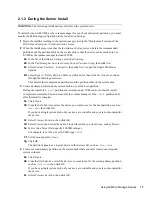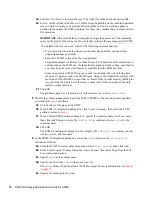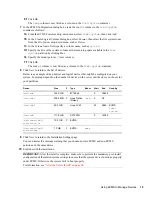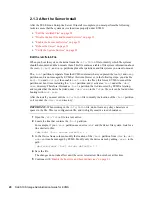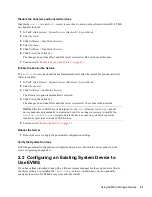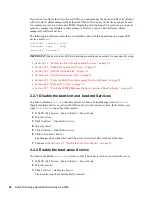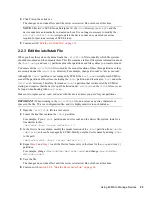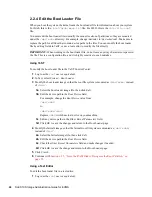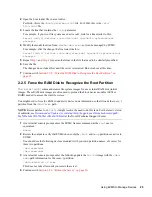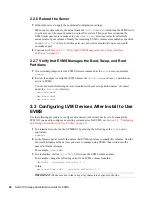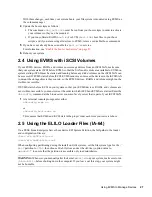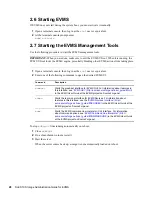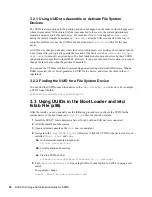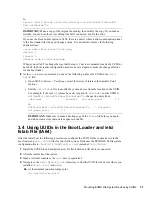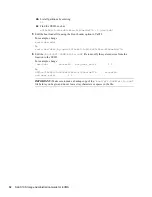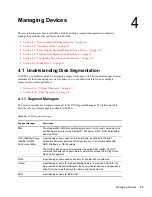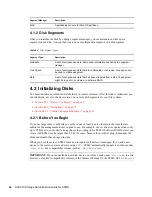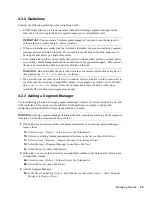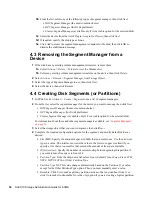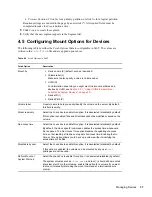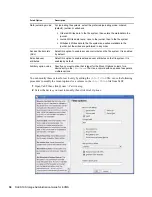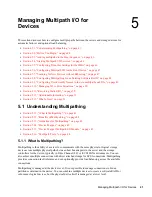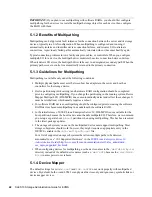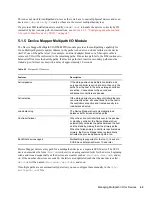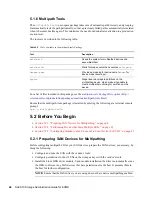
30
SLES 10 Storage Administration Guide for EVMS
no
vd
ocx (
E
NU)
9
Jan
uar
y 2
007
3.2.1 Using UUIDs to Assemble or Activate File System
Devices
The UUID is always unique to the partition and does not depend on the order in which it appears or
where it is mounted. With certain SAN devices attached to the server, the system partitions are
renamed and moved to be the last device. For example, if root (
/
) is assigned to
/dev/sda1
during the install, it might be assigned to
/dev/sdg1
after the SAN is connected. One way to
avoid this problem is to use the UUID in the boot loader and
/etc/fstab
files for the boot
device.
A UUID never changes, no matter where the device is mounted, so it can always be found at boot. In
a boot loader file, you typically specify the location of the device (such as
/dev/sda1
or
/dev/
evms/sda1
) to mount it at system boot. The boot loader can also mount devices by their UUIDs
and administrator-specified volume labels. However, if you use a label and file location, you cannot
change the label name when the partition is mounted.
You can use the UUID as criterion for assembling and activating software RAID devices. When a
RAID is created, the
md
driver generates a UUID for the device, and stores the value in the
md
superblock.
3.2.2 Finding the UUID for a File System Device
You can find the UUID for any block device in the
/dev/disk/by-uuid
directory. For example,
a UUID looks like this:
e014e482-1c2d-4d09-84ec-61b3aefde77a
3.3 Using UUIDs in the Boot Loader and /etc/
fstab File (x86)
After the install, you can optionally use the following procedure to configure the UUID for the
system device in the boot loader and
/etc/fstab
files for your x86 system.
1
Install the SUSE
®
Linux Enterprise Server for x86 with no SAN devices connected.
2
After the install, boot the system.
3
Open a terminal console as the
root
user or equivalent.
4
Navigate to the
/dev/disk/by-uuid
directory to find the UUID for the device where you
installed
/boot
,
/root
, and
swap
.
4a
At the terminal console prompt, enter
cd /dev/disk/by-uuid
4b
List all partitions by entering
ll
4c
Find the UUID, such as
e014e482-1c2d-4d09-84ec-61b3aefde77a —> /dev/sda1
5
Edit
/boot/grub/menu.1st
file, using the Boot Loader option in YaST2 or using a text
editor.
For example, change
kernel /boot/vmlinuz root=/dev/sda1
Summary of Contents for LINUX ENTERPRISE SERVER 10 - STORAGE ADMINISTRATION GUIDE FOR EVMS
Page 4: ...novdocx ENU 9 January 2007 ...
Page 8: ...8 SLES 10 Storage Administration Guide for EVMS novdocx ENU 9 January 2007 ...
Page 10: ...10 SLES 10 Storage Administration Guide for EVMS novdocx ENU 9 January 2007 ...
Page 40: ...40 SLES 10 Storage Administration Guide for EVMS novdocx ENU 9 January 2007 ...
Page 52: ...52 SLES 10 Storage Administration Guide for EVMS novdocx ENU 9 January 2007 ...
Page 74: ...74 SLES 10 Storage Administration Guide for EVMS novdocx ENU 9 January 2007 ...
Page 84: ...84 SLES 10 Storage Administration Guide for EVMS novdocx ENU 9 January 2007 ...


